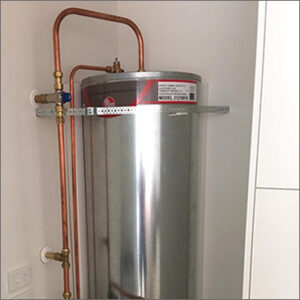Central Heating NZ
Keeping your home in winter means you’ll keep your family healthy. There are many ways to heat individual rooms in your home such as a heat pump, gas fire place, wood burner, and the list goes on. However, if you’re looking to keep your whole house warm all winter, investing in a central heating system may be the solution to your problem.
A central heating system delivers heat throughout your home by pumping warm air through a system of ducts or sending hot water through pipes to room radiators or convectors. In both systems, one or more thermostats turn the heating on and off as the room temperature fluctuates. This allows for even distribution of heat to every room from the heat source.
There are a few different types of central heating options available in New Zealand
- Hydronic heating
- Heat pump central heating
- Coil in concrete
Hydronic Heating
Hydronic heating is the technical name for water based heating – an effective method of warming your whole house.
This type of heating is suited to heating the whole house uniformly, including multi-storey dwellings. It can also be used to heat the household’s hot water.
Hydronic heating works by separating the place where the heat is generated from where it’s released. To do this it needs a way of moving heat from one place to another as quietly as possible. This is done by transporting hot water in insulated pipes throughout the house to radiators.
It takes a lot of heat to raise the temperature of water, so hot water carries a lot of heat energy. With insulated pipes moving the hot water around, a substantial amount of heat can be spread relatively easily from a single source to other places throughout the house.
The most common form of heating the water is by using a boiler; this can be fuelled by natural gas, LPG, diesel, logs or wood pellets. Some models also use a heat pump to heat the water; this transfers heat energy from the air to the water.
Once the water is heated it needs to be distributed to where heat is required, this is done through a system of insulated pipes. The pipes are run from the boiler to an underfloor slab or individual radiators in different rooms. The house can be divided into different heating zones that can be heated at different times to different temperatures.
There are two major systems for releasing heat into your home, underfloor heating and radiators. Some underfloor heating can be retrofitted under timber floors. But this delivery system is most commonly formed by a grid of pipes laid before an insulated concrete slab is poured. The hot water circulated through the pipe grid warms the floor. Radiators are often mounted close to a wall with a gap behind them to allow air to circulate. The radiators can be placed throughout the home and sized to suit each room. Radiator heaters can be retrofitted because the connecting pipes can be run under timber floors, inside walls and over ceilings.
Heat Pump Central Heating
A heat pump extracts heat energy from the air outside, runs it through a heat exchanger, then uses it to heat the inside of your home. Heat pumps are one of the most energy efficient forms of electrical heating.
A ducted central heat pump unit is installed in your ceiling or underfloor space then pumps the warm or cold air through insulated ducts and discreet vents in each room. The vents can be fully customised to match the style and decor of your home.
The system is thermostat controlled and you can choose which areas you’d like to heat. This avoids wasting energy on heating rooms you do not use.
Most homes can accommodate a heat pump system if there is space in the roof or under the floor. The system typically consists of a single, large capacity interior unit fitted in the ceiling space or under the floor. The heated air is then pumped through multiple insulated ducts to outlets/vents throughout your house. The visual components in each room are flush vents, so the system has a very low visual impact.
Central Heating Costs
Installation costs vary as it depends on the type of system you choose and on your home. Costs are estimated to be between $13,000 and $40,000. Running costs are between 6 cents per kWh to over 20 cents, again, this depends on the type of system and your home.
Advantages of Central Heating
- There are no droughts, not or cold spots, or noisy fans as there is no forced air movement
- The heat is passive and unobtrusive, it warms objects and fabrics in the room
- The process is very efficient, no water is consumed.
- All systems are fitted with a thermostat and time controller, allowing warmth to be delivered only when required
- Individual radiators are fitted with a thermostat as well, this allows precise control over the heat supplied to each room in the house
- A system using wall mounted radiators can be installed in new or existing homes
Disadvantages of Central Heating
- These systems may be expensive to retrofit to existing homes
- Central heating systems can be expensive to run if your home is not well insulated
- Ducted systems experience heat losses from ducting under the floor or in the ceiling
- Radiator can take up floor space in the house
- Some systems need to be installed into concrete floor slabs when poured
If you are interested in fitting a central heating unit to your existing home or your new home, give us a call on 0800 758 623. We can consult and advise on which types would be best suited to your requirements and your home and provide a detailed quote to install the unit get in touch today.

